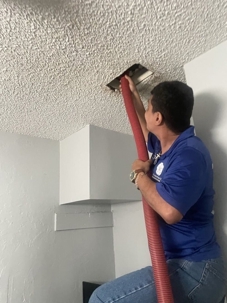Air conditioning technicians, the unsung heroes of our comfort, often face hazardous working conditions. From electrical risks to confined spaces, the potential dangers are real. This is where a comprehensive safety guide becomes an indispensable tool, empowering technicians to prioritize safety without compromising efficiency.
The Indispensable Role of a Safety Guide
A well-structured safety guide is more than just a document; it’s a lifeline. It’s a roadmap that navigates technicians through the complex terrain of potential hazards, providing clear, actionable steps to mitigate risks. For Momentum AC & Electric technicians, this guide is a cornerstone of their safety culture.
Understanding the Hazards
The first step in ensuring safety is recognizing the potential dangers. A robust guide meticulously outlines the common hazards air conditioning technicians encounter, such as:
- Electrical Risks: Working with high voltage, exposed wires and electrical panels demands utmost caution. The guide emphasizes the importance of proper electrical safety equipment, lockout/tagout procedures, and regular equipment inspections.
- Chemical Exposure: Refrigerants, cleaning agents, and other chemicals used in the HVAC industry can pose health risks. The guide details the safe handling, storage, and disposal of these substances, including using personal protective equipment (PPE).
- Confined Spaces: Attics, crawl spaces, and ductwork can be confined spaces with limited oxygen and potential for falls. The guide provides guidelines for entering and working in these areas, including ventilation, fall protection, and emergency procedures.
- Physical Hazards: Heavy equipment, sharp tools, and strenuous physical activity increase the risk of injuries. The guide emphasizes proper lifting techniques, tool safety, and the importance of physical fitness.
Building a Safety Culture
A safety guide is just one piece of the puzzle. Momentum AC & Electric fosters a safety culture where every technician feels empowered to prioritize safety. This is achieved through:
- Regular Training: The guide is the foundation of ongoing safety training programs. Regular refresher courses, hands-on demonstrations, and interactive workshops reinforce safety practices.
- Open Communication: A culture of open communication encourages technicians to report near-misses, incidents, and safety concerns without fear of reprisal.
- Leadership Commitment: Momentum AC & Electric senior management demonstrates an unwavering commitment to safety by leading by example and allocating resources for safety initiatives.
Empowering Technicians
The ultimate goal of a safety guide is to empower technicians to make informed decisions. By providing clear guidelines, checklists, and emergency procedures, the guide equips technicians with the knowledge and tools to protect themselves and others.
- Checklists: Detailed checklists for various tasks, from electrical safety to ladder inspections, help technicians ensure that no critical step is overlooked.
- Emergency Procedures: Clear and concise procedures for incidents, such as electrical shocks, chemical spills, or injuries, are essential for a rapid response.
- Continuous Improvement: The safety guide is a living document that is subject to regular review and updates based on industry best practices, regulatory changes, and lessons learned from incidents.
Beyond Compliance: A Proactive Approach
While compliance with safety regulations is crucial,Momentum AC & Electric goes beyond mere compliance. The safety guide is a catalyst for a proactive approach to safety, emphasizing prevention and risk mitigation.
By investing in comprehensive safety training, providing the necessary equipment, and fostering a culture of safety, Momentum AC & Electric is committed to creating a workplace where every technician returns home safely at the end of the day.
The Nitty-Gritty of Safety: Specific Protocols
While a comprehensive safety guide provides a solid foundation, the granular details truly safeguard technicians. Let’s delve deeper into specific safety protocols that Momentum AC & Electric emphasizes:
Electrical Safety: A High Voltage Concern
Electrical hazards are a constant threat for HVAC technicians. To mitigate risks, Momentum AC & Electric mandates:
- Lockout/Tagout Procedures: Stringent protocols are in place to ensure equipment is isolated and rendered inoperative before maintenance or repairs. Technicians are trained to verify isolation, attach lockout devices, and document the process.
- Ground Fault Circuit Interrupters (GFCIs): These devices are mandatory on all electrical equipment and provide immediate protection against electrical shock.
- Wet Conditions Safety: Special precautions are implemented when working in damp or humid environments. Insulated tools, rubber mats, and personal protective equipment are essential.
- Cable Management: Proper cable organization and routing prevent accidental damage and electrical hazards.
Chemical Handling: A Delicate Balance
HVAC technicians frequently handle chemicals, necessitating strict adherence to safety guidelines:
- Personal Protective Equipment (PPE): The appropriate PPE, including gloves, goggles, and respirators, is essential when handling chemicals.
- Chemical Handling Procedures: Detailed protocols cover the safe transfer, mixing, and disposal of chemicals. Technicians are trained to read and understand chemical labels and safety data sheets (SDS).
- Ventilation: Adequate ventilation is crucial to prevent chemical exposure. Technicians are instructed to work in well-ventilated areas or use respiratory protection when necessary.
- Emergency Procedures: In case of chemical spills or exposure, technicians are equipped with knowledge of emergency procedures, including first aid and evacuation plans.
Confined Space Entry: Breathing Easy
Working in confined spaces like attics and crawl spaces poses unique challenges. Momentum AC & Electric ensures technician safety through:
- Atmosphere Testing: Before entering a confined space, the atmosphere is tested for oxygen levels, toxic gases, and other hazards.
- Ventilation: Adequate ventilation is established to remove contaminants and ensure fresh air supply.
- Entry Permits: A confined space entry permit system is in place to authorize entry and outline safety precautions.
- Rescue Plans: Emergency rescue plans are developed for each confined space, including the location of rescue equipment and trained personnel.
- Communication: Constant communication between the technician inside the confined space and a designated observer is mandatory.
Physical Ergonomics and Injury Prevention
Physical demands on HVAC technicians can lead to musculoskeletal disorders (MSDs). To prevent injuries, Momentum AC & Electric focuses on:
- Proper Lifting Techniques: Technicians are trained in proper lifting techniques to avoid back injuries.
- Tool Maintenance: Tools are regularly inspected and maintained to ensure optimal performance and reduce the risk of injuries.
- Ergonomic Equipment: Whenever possible, ergonomic tools and equipment are provided to minimise physical strain.
- Rest Breaks: Regular rest breaks are encouraged to prevent fatigue and reduce the risk of accidents.
Continuous Improvement: A Safety Journey
Safety is an ongoing process, not a destination. Momentum AC & Electric fosters a culture of continuous improvement through:
- Incident Reporting: Technicians are encouraged to report near-misses and incidents without fear of reprisal. These reports are analyzed to identify potential hazards and implement corrective actions.
- Safety Audits: Regular safety audits are conducted to assess compliance with safety protocols and identify areas for improvement.
- Employee Involvement: Technicians actively participate in safety initiatives through safety committees and suggestion programs.
Momentum AC & Electric is committed to protecting its technicians and ensuring a safe working environment for everyone involved by implementing these comprehensive safety protocols and fostering a strong safety culture.
Technology: A Safety Shield for HVAC Technicians
Technology integration has revolutionized the HVAC industry, and safety is no exception. Momentum AC & Electric leverages technology to enhance safety protocols in several ways:
Digital Safety Checklists and Documentation
- Real-time access: Technicians can access detailed safety checklists and procedures digitally, ensuring up-to-date information is always at their fingertips.
- Electronic signatures: Digital signatures confirm safety protocols have been followed, providing a verifiable record.
- Data analysis: Collected data can be analyzed to identify trends, potential hazards, and areas for improvement.
Wearable Technology for Personal Safety
- Smartwatches: These devices can monitor heart rate, blood pressure, and other vital signs, alerting technicians to potential health risks.
- Fall detection: Integrated fall detection systems can automatically trigger alarms and emergency response if a technician falls.
- Location tracking: GPS-enabled devices allow real-time location tracking, facilitating rapid emergency response.
Remote Monitoring and Diagnostics
- Equipment health monitoring: Real-time monitoring of HVAC equipment can identify potential issues before they escalate into safety hazards.
- Predictive maintenance: Technicians can schedule maintenance during safe operating conditions by anticipating equipment failures.
- Virtual assistance: Remote experts can provide real-time guidance and support, reducing the need for technicians to enter hazardous situations.
Augmented Reality (AR) Training
- Immersive learning: AR training simulates real-world scenarios, allowing technicians to practice safety procedures in a controlled environment.
- Hazard visualization: AR can highlight potential hazards, improving risk awareness and decision-making.
- Hands-on practice: Technicians can practice safety procedures without risking actual harm.
Drones for Inspection and Assessment
- Remote inspections: Drones can access hard-to-reach areas, reducing technicians’ risk of accidents.
- Hazard identification: Drones with cameras and sensors can detect potential safety hazards, such as structural damage or electrical issues.
The Human Element Remains Crucial
While technology offers invaluable tools, it’s essential to remember that safety is ultimately a human responsibility. Momentum AC & Electric emphasizes that technology should complement, not replace, human judgment and expertise. By combining the power of technology with a strong safety culture, we can create a safer working environment for all HVAC technicians.
Conclusion
A safety guide is more than just a document; it’s a commitment to the well-being of air conditioning technicians. For Momentum AC & Electric, it’s a cornerstone of their safety culture. Understanding the hazards, building a solid safety culture, and empowering technicians create a safer work environment for everyone involved.
Remember, safety is not an option; it’s a priority. By investing in safety, we invest in the future of our industry and the lives of those who make it possible.
FAQs
What is the most common safety hazard for air conditioning technicians?
Electrical risks are often cited as the most common safety hazard for air conditioning technicians. Working with high voltage, exposed wires, and electrical panels demands utmost caution.
How often should safety training be conducted?
Safety training should be conducted regularly, ideally at least annually, with refresher courses and hands-on demonstrations throughout the year.
What is the role of management in promoting safety?
Management plays a crucial role in promoting safety by demonstrating leadership commitment, allocating resources, and fostering a culture of open communication.
How can a safety guide be made effective?
A safety guide can be made effective by being clear, concise, and easy to understand. It should be regularly reviewed and updated to reflect industry best practices and regulatory changes.
What is the ultimate goal of a safety guide?
The ultimate goal of a safety guide is to empower technicians to make informed decisions and to create a safer work environment for everyone involved.

